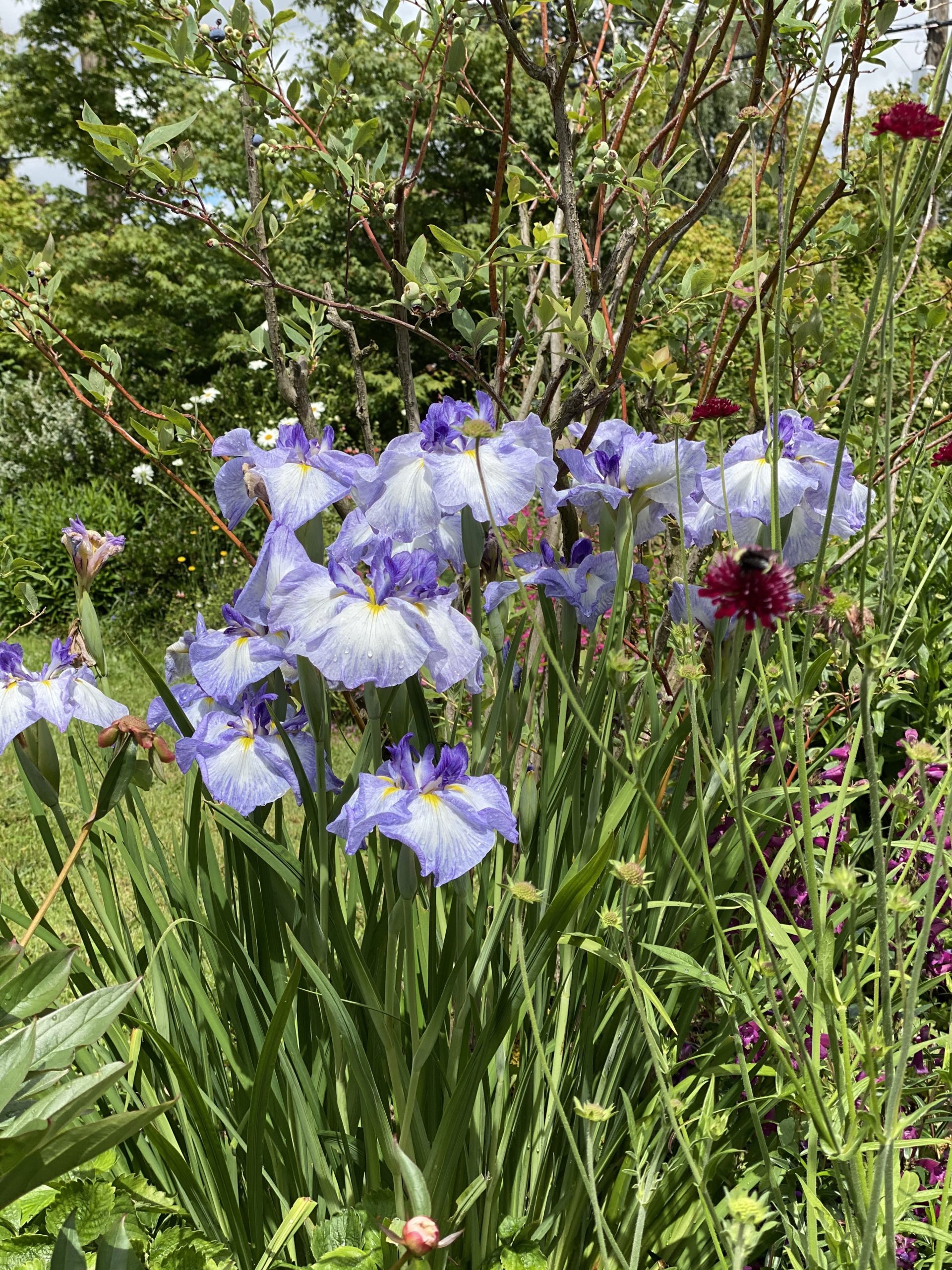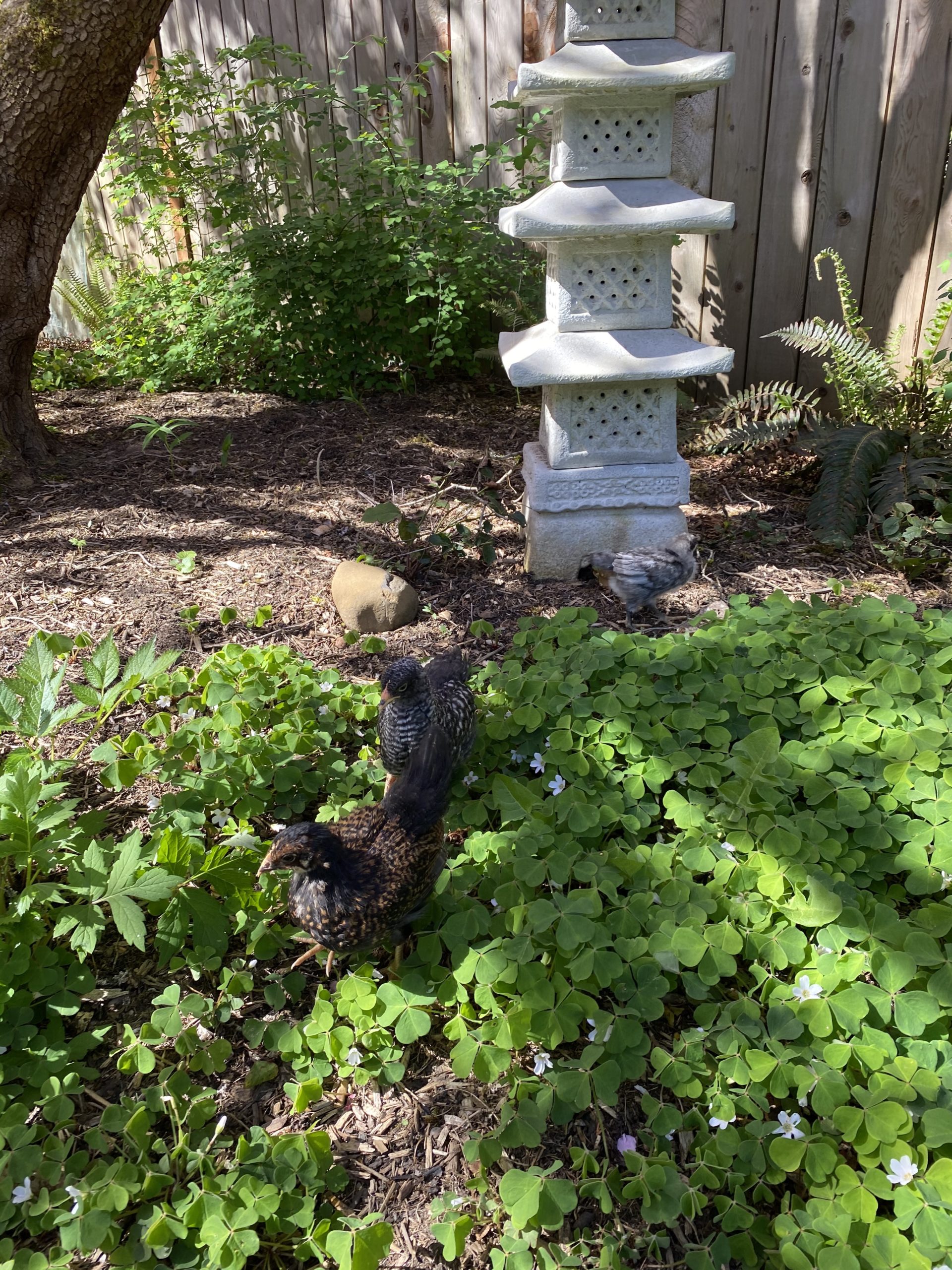Site Information: Amber’s habitat in the Cully neighborhood is full sun to full shade, with dry soil conditions and a slope
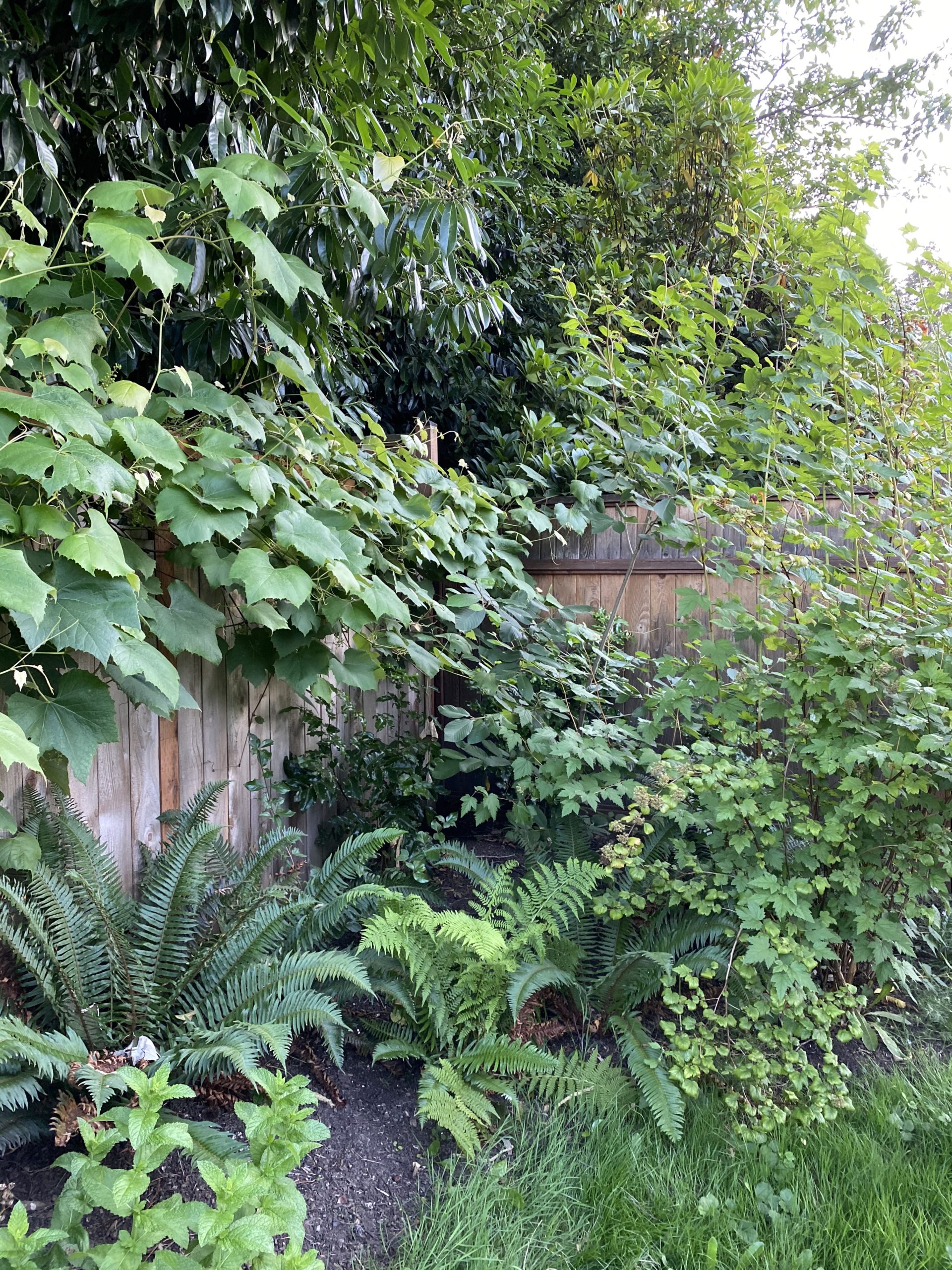
What inspired you to enroll in the Backyard Habitat Certification Program?
I became interested in native habitat restoration during a stint living in Los Angeles. I was amazed at the wildlife that shows up once native plants are present, even in an urban environment. When I moved to Portland many years ago, I was so excited to find this program – one that encourages native habitat restoration in urban home gardens, and also offers such amazing resources, support and perks for doing this important work!

How would you describe your habitat?
We have a varied landscape that includes shady rock walls, full sun patches, sloped passages, and shady tree understory. When we moved into our 1950s house 5 years ago, the yard contained some mature trees, lava stone mulch, spindly landscape plants, and lots and lots of lawn. There were no insects, birds or animals to be found. It felt dead. We have restored the flora and fauna with native plants and trees, organic soil building, food forestry and permaculture practices, and zero chemical or synthetic inputs. We have observed that these efforts have created wildlife corridors that connect creatures to neighboring yards and green spaces as well. The garden is thriving and we see new species regularly.
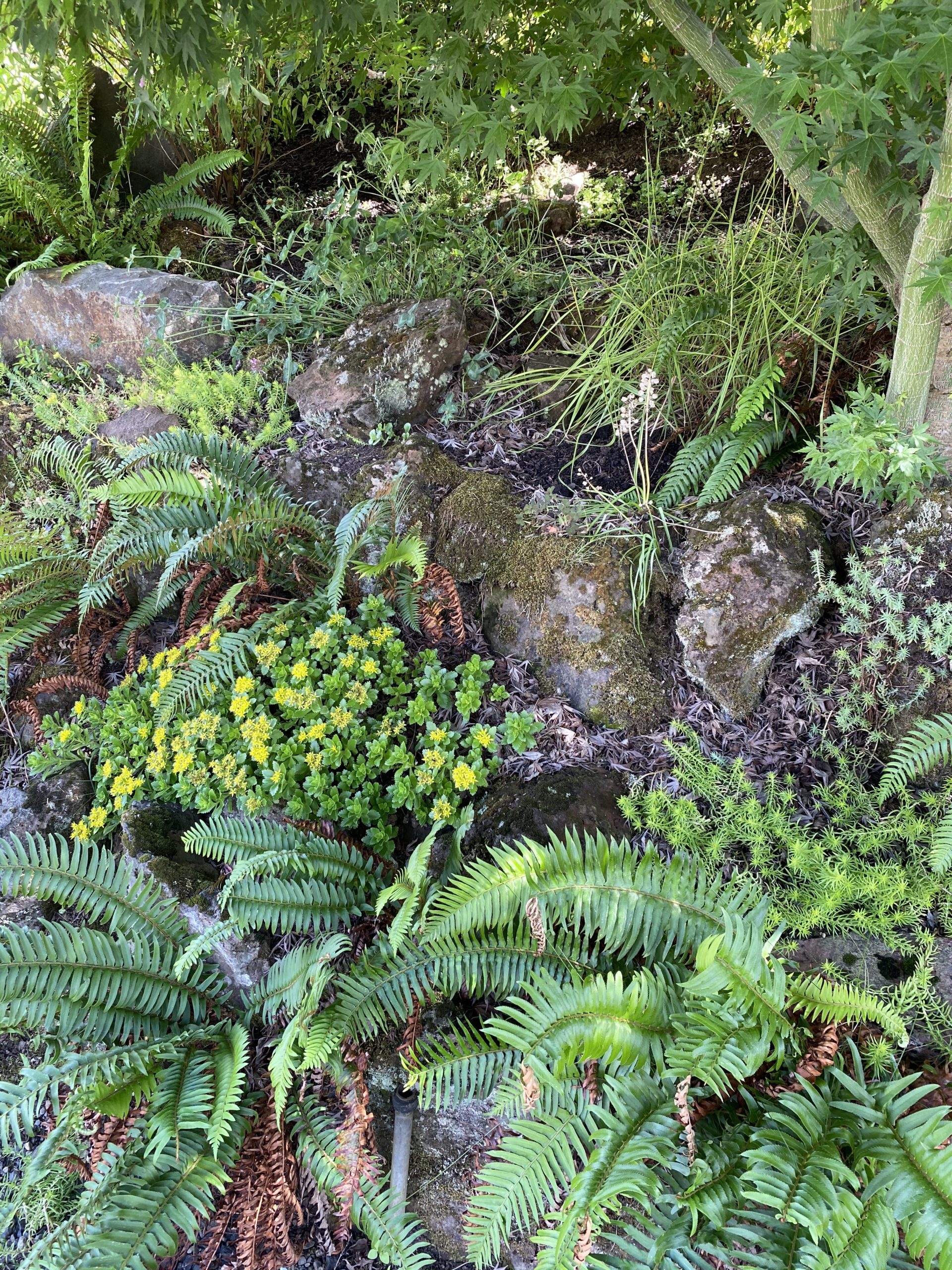
What are your top three favorite native plants and why do you love them?
Only three!!?? Mock orange (fragrant flowers, gorgeous habit), red flowering currant (spring flowers, hummingbird magnet), Bigleaf lupine (purple flowers, hardiness, I also love how they hold a drop of water in the leaves each morning so the insects can have a drink!)

What changes have you observed as a result of creating habitat?
I have noticed a very shocking increase in wildlife and diversity in my garden and throughout the neighborhood. My soil has improved from the microbial and fungal benefits, increased insect and bird activity and leaf litter. My surrounding (non-native) plants are healthier. I have engaged with many neighbors about creating habitat and we have all shared ideas, plants, and the progress in our gardens. It’s a culture 🙂
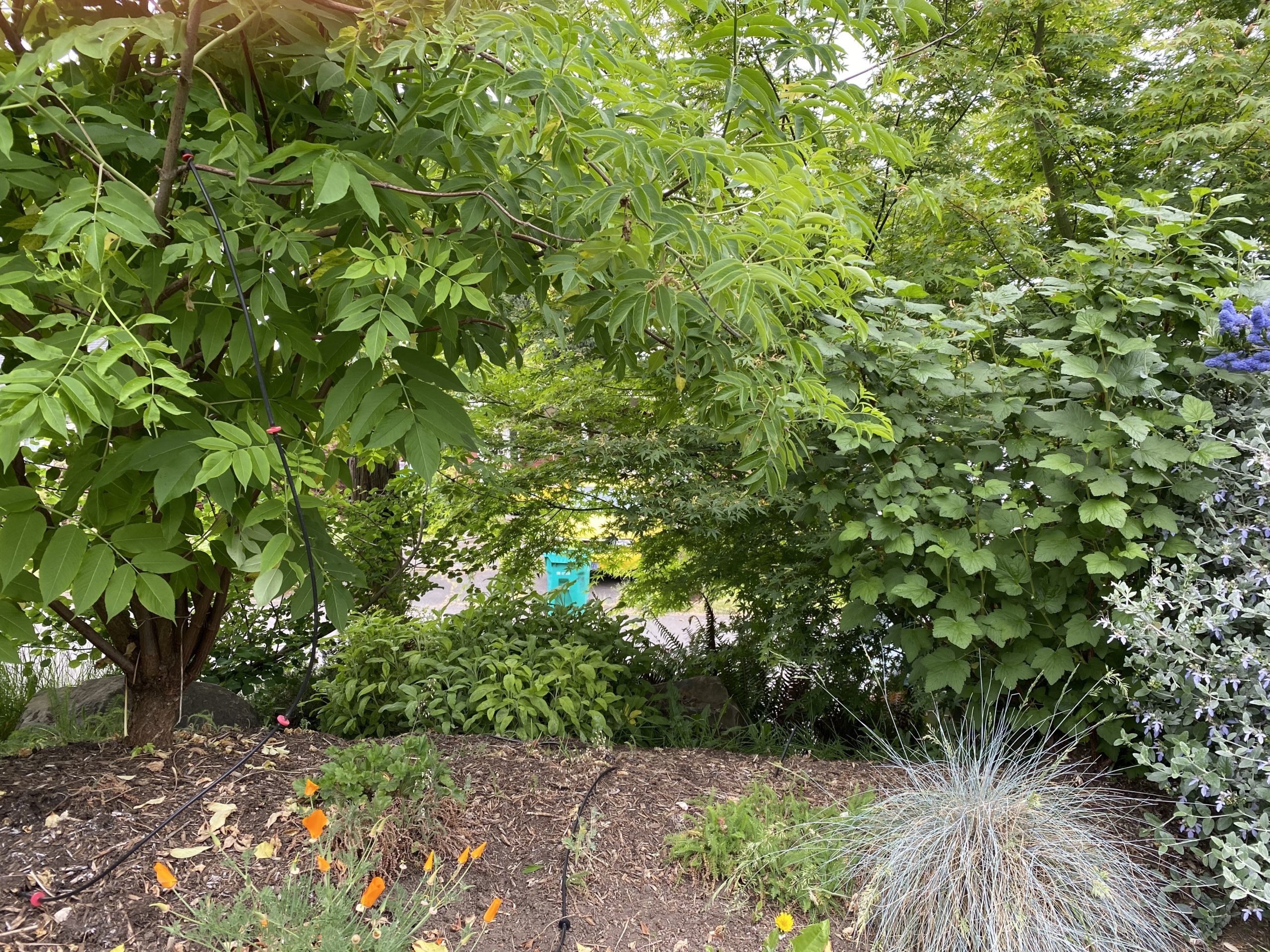
What were the two most significant challenges you encountered while creating habitat, and how did you address them?
I have an area that experiences dry shade, which is really tough for natives. It has taken a little longer to get things established in those areas, but I have been surprised by the species that have thrived! The trick has been to increase watering during establishment and also give supplementary water during our winter/spring seasons. I usually fill a few buckets with rainwater to use! I hope to divert rainwater from an adjacent sidewalk to this area eventually. I also have been battling ivy, blackberry and other weeds that are persisting in neighbors yards. I have to be diligent about removing invaders. I have asked my neighbors if they need help in removing it from their yard, as a way to give a gentle nudge.

What resources did you find especially helpful?
Books
- Encyclopedia of Northwest Native Plants for Gardens and Landscapes
- Gaia’s Garden
Websites
- EMSWCD.org
- realgardensgrownatives.com
- cloudmountainfarmcenter.org
- northwestmeadowscapes.com
Classes
I have taken several through EMSWCD (topics: natives, rain gardens, weeds) and a few through OSU master gardener extension.
Organizations
- Columbia Land trust
- Portland Audubon
Native nurseries have SO much info!! I especially love Bosky Dell, Sparrowhawk, and Echo Valley.
How do you enjoy your Backyard Habitat throughout the different seasons? What are its highlights in each season?
- Winter – we love seeing the birds forage in our habitat from our big front window. Enjoying the presence of the evergreen plants and trees in the stark winter landscape.
- Spring – watching all the flowering shrubs and meadow plants wake up and bring cheer. Watching the birds and insects working in our yard.
- Summer – relaxing in the cooler microclimate our woodland creates. Enjoying berries and flowers.
- Fall – enjoying the changing colors in the leaves, watching the creatures prepare for winter and knowing that we have provided habitat and food sources to sustain them through the cold. “
What part of your backyard habitat are you most proud of?
The garden nerd and ecologist in me is most proud of the soil enrichment and fauna species that have re-emerged. Most people notice the beauty and lushness of the garden, which makes me proud as well.

Is there anything else you’d like to add about your journey?
This community has turned my interest into a passion that I have been able to share with other neighbors, my children’s school garden and other groups that I’m involved with. I’m truly grateful.
